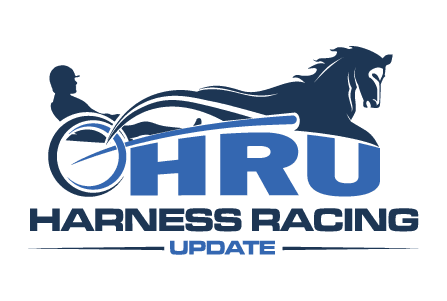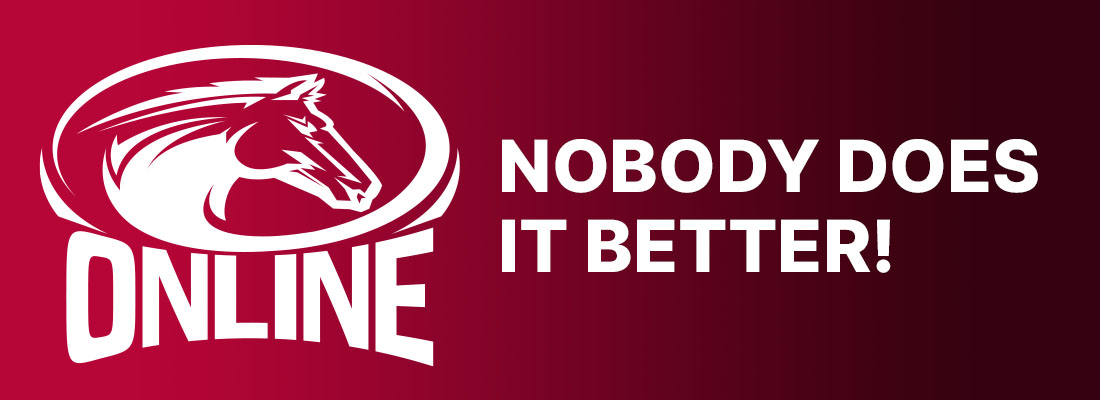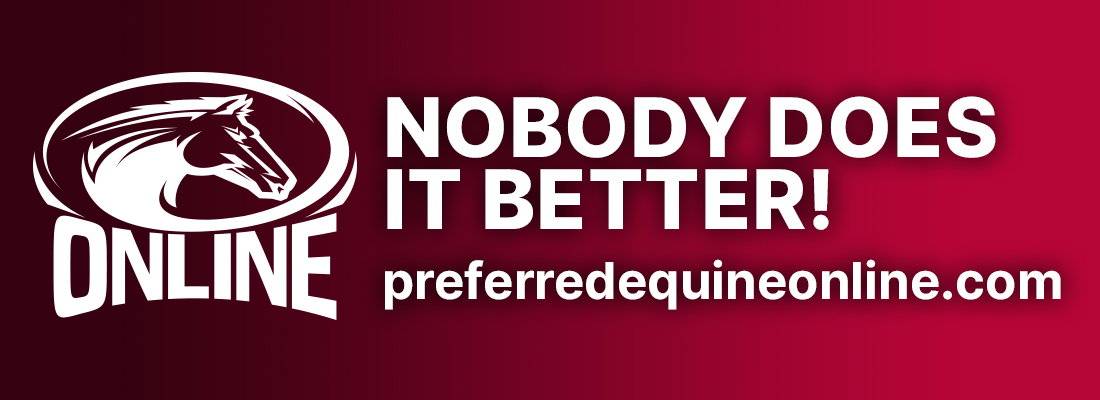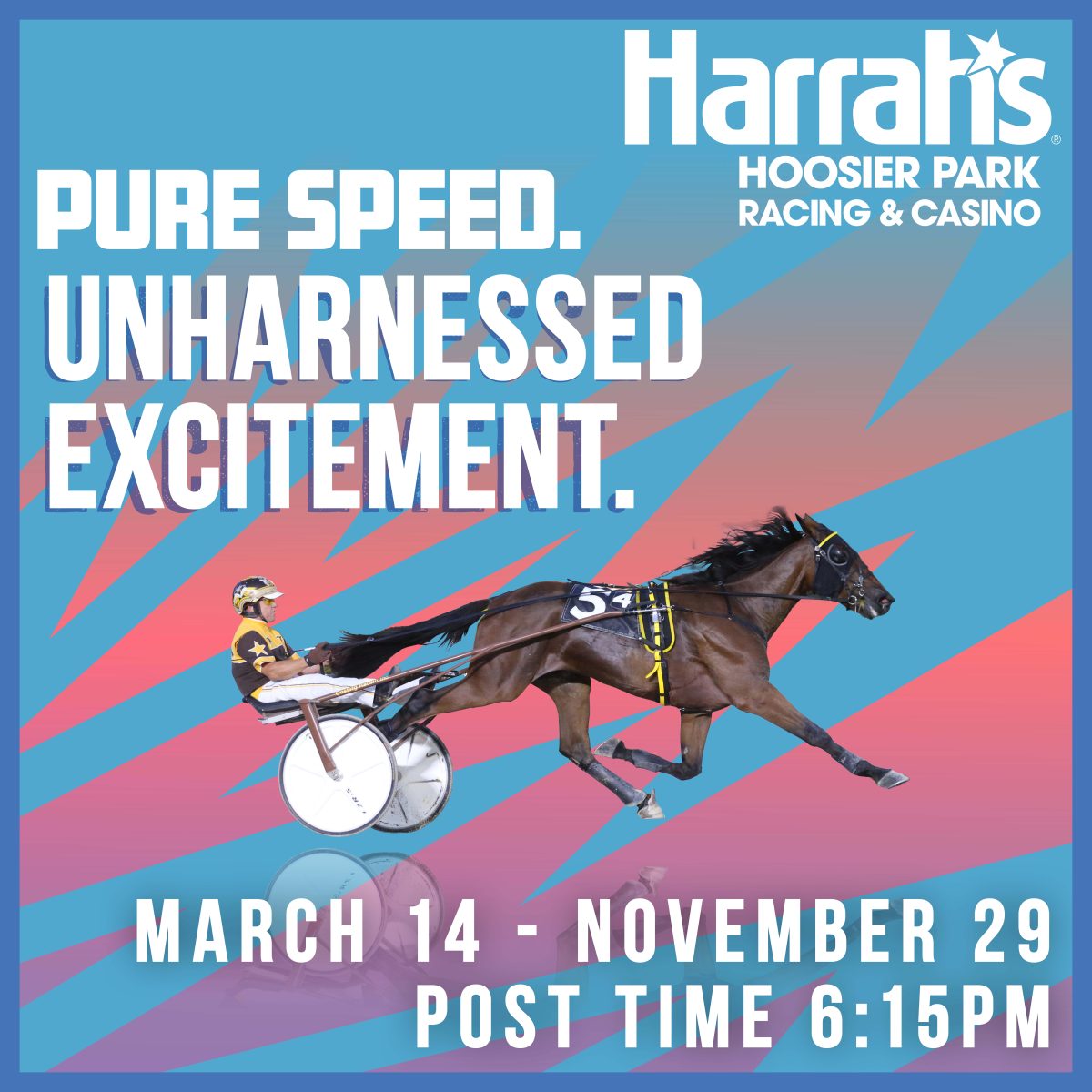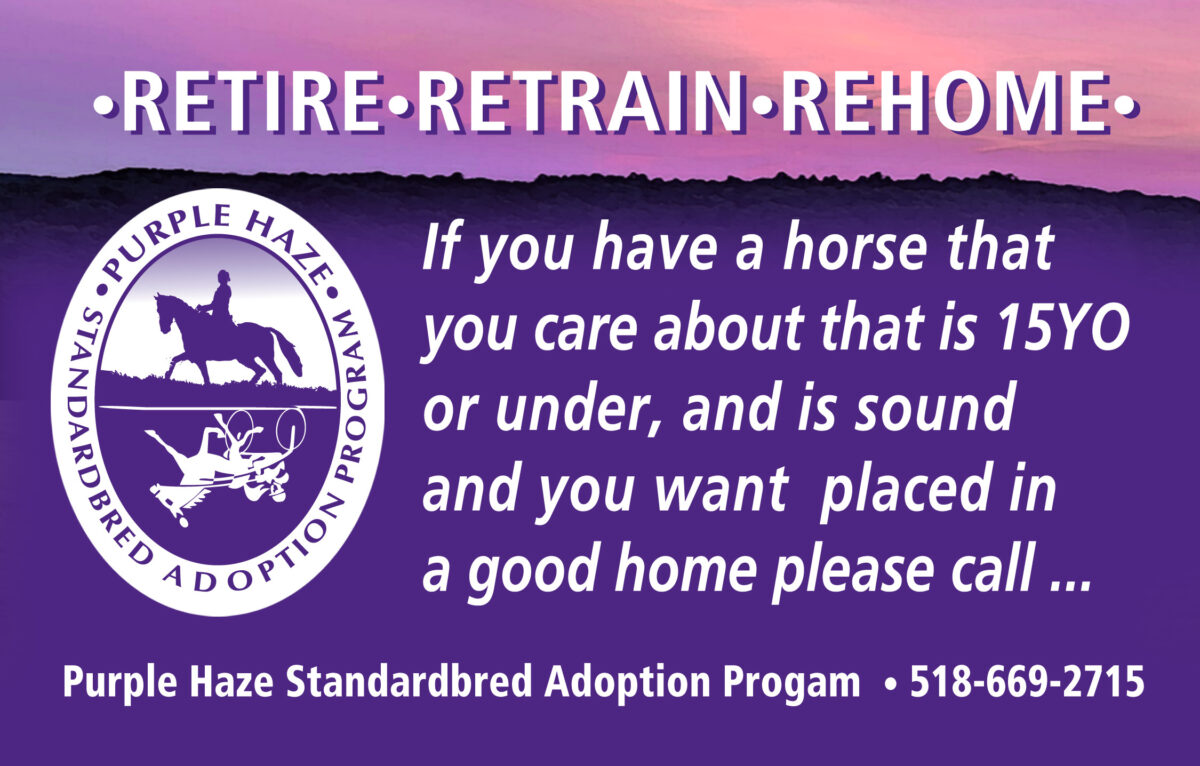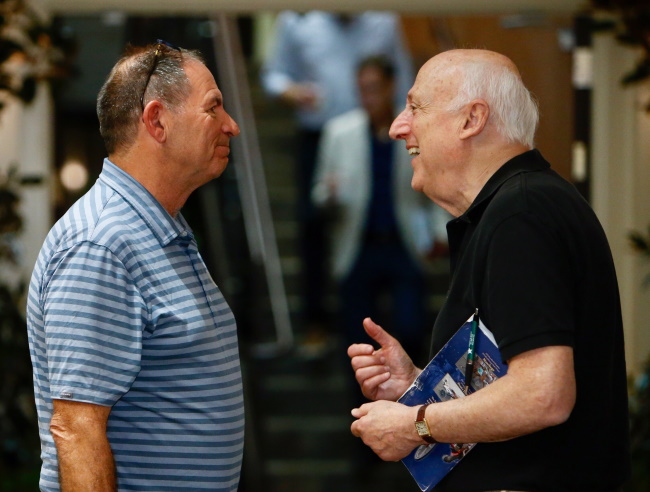A conversation with George Segal of Brittany Farms
by Murray Brown
Integrity, loyalty, wise, fair, generous, brilliant, thankful, liberal, in all senses of the word.
Those are just a few of the words I might use to describe my friend George Segal.
He was born and raised in New York City and recalls periodically going to Roosevelt and Yonkers, but those visits really didn’t contribute to the strong place harness racing was to have in his life.
After graduating from Baruch College at CCNY in New York City, he attended the Business School at the University of Michigan.
After Michigan, he found himself in the meat business and residing in Framingham, MA. He recalls reading an article in the Sunday New York Times about the Mercantile Exchange in Chicago. At the bottom of the story there was a phone number. The next day he called the number and expressed his interest in learning the business.
He was granted an interview for that Wednesday. That same day he was offered a job as an analyst at twice the salary he was making.
After a quick discussion with his wife Joan, he accepted the offer. They moved to Chicago.
Two things he remembers being told from the interview: 1. You will never find a more interesting business (that was before becoming involved in the horse business, of course) and 2. There is no limit to the amount of money that can be made.
George began working on the floor of the Mercantile Exchange in Chicago. Two of his friends and associates on the floor, Don Stevens and Brian Monieson, were doing the same, but they were also moonlighting in harness racing.
Don was working in the publicity department at Sportsman’s Park.
Brian published a tout sheet that was sold at the Chicago racetracks Sportsman’s Park, Washington Park and Maywood Park.
Don convinced George that Harness racing, in addition to being a great sport was a lot of fun. He told George that he had the perfect trainer for him. His name was Gene Riegle.
Thus began a lifetime association. The first yearling that Gene purchased for George was a Bret Hanover colt named Quick Glancer. He wasn’t a star, but he paid his way. George recalls him winning a stakes race at Greenville OH, Gene’s hometown.
It wasn’t until a few years later, 1980 to be exact, at the first Kentucky Standardbred Horse Sale, that George purchased the horse that changed his status from some involvement in the business, to being in it big time. Her name was Three Diamonds. He bought her for $100,000.
Those who saw her race would undoubtedly agree that if she wasn’t the very best of her generation, she was darn close.
If as I did, you watched her, you would undoubtedly think that she ranks among the greatest race fillies to ever look through a bridle.
As great as she was on the track — and she was awesome — her legacy as a broodmare is even greater. Life Sign, Bettor’s Wish, American Ideal and American Jewel are just four of the great champions that descend directly from her. As great as her legacy is, it would likely be far greater if she had not passed at a young age.
Riegle selected her and just about every great champion that George was involved with throughout Riegle’s association with him.
From that point on, George Segal was on his way to becoming the most influential breeder of his generation, certainly on a pro rata basis and in any conversation as the greatest breeder in the sport’s history.
What about that?
“I’ll leave it up to others to assess the achievements of Brittany Farms,” George said.
Speaking of Gene Riegle, George says, “He was the greatest yearling selector that I and probably anybody else has ever known. Most trainers have a prototype of the kind of yearling they like, Gene was different. He’d pick the ones that he liked with an assortment of traits. There was no predicting which ones he’d pick and he didn’t need to look at one for long. But he was right a whole lot more than he was wrong.
“I remember in 1988 when the first crop of Nihilators came out. We went to Lexington with the intent of buying at least one and maybe more of them. Gene looked at every single one and wouldn’t pass on any. Instead he liked a Troublemaker colt out of Cartier in the Dunroven Farm consignment. That horse was Odds Against who even though he was in the same crop of Artsplace, Precious Bunny and Die Laughing ended up making $1,403,938 for us.
“In 1990, as was our custom we went to Hanover to get a sneak preview of their yearlings prior to the Lexington sales. As was always the case, the Hanover yearlings had just come in from the fields and were in the process of becoming civilized. Nevertheless, Gene said he didn’t need them spruced up and looking good. He could look through the lack of shine and civility. When we left the Farms, Gene said to me, ‘I don’t care what you buy or how much you spend at Lexington, but be sure to keep enough money to buy that little No Nukes colt at Hanover.’ I said to him, “Isn’t he too small and what about that capped hock that he has?’ ‘Don’t worry about that. He’ll be alright. Just buy him.’ That colt was Western Hanover.”
There are some who would say that you are the greatest breeder of your generation, certainly on a pro rata basis and you certainly should be among the greatest ever. Let’s talk about some of the horses that you’ve bred and raised.
“Before we do that I think we should speak about the real genesis of Brittany Farms. The breeding operation all began through the purchase of Bill Shehan’s Clermont Farm and his broodmare band of 35 mares. Prior to that, I had hired Art Zubrod and his wife Leah in 1981 to be my farm managers. We had leased some space at the famous thoroughbred farm Hamburg Place owned by Preston Madden. The piece we leased with Art and Leah residing in a mobile home was called Clear Creek. In 1985, we made the Shehan purchase. Prior to that, almost all of my mares were pacers. Bill’s mares consisted of 25 trotters and 10 pacers.”
Artsplace – “His dam Miss Elvira showed a lot of speed as a 2-year-old. She won her first two races effortlessly and then unfortunately bowed a tendon. I owned her with my good friend Brian Monieson. Her first foal wasn’t the best individual and became an overnight racehorse. Her next foal was Artsplace who was really good looking, but wasn’t a perfect specimen. Most importantly, he passed the Gene Riegle acceptance test. Throughout his first winter, he trained fair at best. He never showed any sparks of potential greatness. In late Spring I remember receiving a call from Alan Riegle, Gene’s son, saying, ‘You know what George? That Abercrombie colt might be alright.’ The rest is history. His performance in the Breeders Crown setting a world record at Pompano would have to rank, to anybody who saw it, as one of the greatest performances ever. He was very good, but not great at 3. We brought him back at 4 and gave him to Bob McIntosh. He went through the year undefeated and was voted Horse of the Year. As a sire, he has been nothing short of fantastic.”
Life Sign – “Here was a horse that had it all. He was impeccably bred, being by Abercrombie, out of the great Three Diamonds, a great individual, an amazing racehorse at both two and three. His victory in the Little Brown Jug was a race for the ages. Yet, although, not a failure as a sire, given all his credentials, one might classify him as disappointing. Such are the vagaries involved in breeding horses.”
Father Patrick – “We bought his dam Gala Dream for $100,000. She exhibited very little ability and a poor attitude in training. But she had pedigree. Everything else is a plus, but pedigree is a necessity to me. She had a few foals before Father Patrick, Pastor Stephen, being the best. Jimmy Takter bought Father Patrick for $100,000 as a yearling. I thought that he might bring more, perhaps a whole lot more. I and Marvin Katz asked Jimmy if we could get in as partners. We ended up buying 20 per cent each. Jimmy divided the remaining 601 per cent between himself and some of his owners. It’s still early in the game, but it appears at this time he might be a great stallion — possibly a game changer.”
Self Possessed – “He, as do many of our horses, traces to the group of mares that I first bought from Bill Shehan. He was by Victory Dream, a horse who in my opinion would have become a great sire if not for fertility problems. Ronnie Gurfein trained Victory Dream and was, naturally enough, interested in buying at least one from his first crop. He fell in love with Self Possessed the first time he saw him. He bought him for a group that included David Scharf, Deena Frost and one or two of his other clients. I asked if I could get in for part of him and Ronnie acquiesced. He was the first Hambletonian winner that we bred. When he was at his best, he was just tremendous. As a sire, he started off well, but there was no great consistency to his success. As a sire, one would classify him as being disappointing, but he sired one horse who was destined for greatness both on the racetrack and in the breeding shed. That horse is of course Cantab Hall who at an advanced age is still producing top trotters including the aforementioned Father Patrick.”
We could go on forever in mentioning the horses that Brittany Farms and George Segal played a part in producing. They include, but are not limited to: Western Ideal, American Ideal, Artiscape, Art Major, He’s Watching, Mr Muscleman,Bettors Wish, Glidemaster, Six Pack, Continentalvictory, Manchego, Lifetime Pursuit, Lookout Victory, Marita’s Victory, Artspeak, Vintage Master, American Jewel, Mr Feelgood, Reflect With Me, Sportsmaster, plus two very exciting 2-year-oldsthis year in Perfect Sting and Making Waves. They include three Hambletonian winners, five Hambletonian Oaks winners and multiple winners of just about every major stakes race in North America.
George, there are also many top horses that you didn’t breed yourself, but either bought as a yearling, while they were racing or at the conclusion of their racing career. They include:
Captaintreacherous – “This is another horse that had it all and did it all. I give all credit for him to Tony Alagna who trained him and Myron Bell who was determined to buy him. All of the members of my buying team (which we will get to later) agreed that he was ‘the one.’ He indeed was on the racetrack and is now making a huge impact in the breeding shed. If he isn’t the greatest living pacing stallion, I don’t know who you would put up against him.”
Valley Victory – “Although I didn’t breed or own him as a racehorse, he is the only trotter to this point, that I’ve owned that I would describe as a breed changer. All credit for his acquisition belongs to others — from Bill Weaver who bred him, to Pat Waldo who picked him out as a yearling for his owner Arlene Traub, to Steve Elliott who trained him, Bill O’Donnell who drove him and most importantly as it relates to me to Tony Pedone who convinced me that he was a great horse who was destined to become a great sire. Apparently, a tentative deal had been made to sell him to European interests. Tony, with his unique power of persuasion, managed to convince Arlene Traub to change her mind and sell him to us. As great a changer of the breed as Valley Victory was, there is no telling how great an influence he would have been if he had good fertility.”
Cantab Hall – “He was in Self Possessed’s first crop. Ronnie Gurfein, Myron Bell and myself went to Walnut Hall Limited to look at their yearlings. Alan Leavitt had two sensational trotting colts that year. They were Cantab Hall and Cash Hall. They were both as perfect as yearlings could be. I knew that they would each bring a lot of money. I limited Ronnie to buying just one. It was a tough decision but ultimately Ronnie thought that Cantab trotted a little better in the field. Cash Hall turned out to be a world champion as well, but Cantab was the one. He swept just about everything as a 2-year-old and became one of the few 2-year-olds ever to be voted as Trotter of the Year. He is now generally acknowledged as being one of the world’s greatest trotting sires.”
Western Hanover – “We spoke about him above and how I came to buy him. He was a very good, but in my opinion not a great racehorse. Although he was voted both 2- and 3-year-old pacing colt of the year. I remember meeting you and Paul E Spears at the Union Square Cafe in NYC at lunch where we consummated the deal to have him stand at Hanover. All of us would be lying if we said that we expected him to become the great sire for the ages that he became. We put together a syndicate and offered shares in him to every prominent breeder in North America. Only Allamerican Standardbreds bought a single share. None of the others were interested in buying a share or even breeding to him. He came to his success mostly by being bred to mom and pop mares. Certainly, Hanover bred many mares to him and I bred some. Within a very short time, he became recognized as one of the greatest pacing sires ever in harness racing history.”
Walner – “He was as talented a colt as I’ve ever seen. Unfortunately, his racing career was negated by a soft tissue injury which prevented him from going on. When my good friend Frankie Antonacci was putting a deal together to stand him, I was all in. His oldest foals are yearlings. From all that I’ve heard, they are sensational. We shall see.”
George, you use the term “team” a lot. You are known as a person who gives credit to others and has no reluctance to hear other people’s points of view. Can you speak on that?
“I’ve never believed that I have all the answers. There are various people who excel in various areas in this life of ours.
“There are numerous people who have contributed to any success that I’ve been fortunate enough to have. These include, but are not necessarily limited to, Art and Leah Zubrod, Myron Bell, the Riegle family, Bob McIntosh, Ronnie Gurfein, Jimmy Takter, Tony Alagna, Linda Toscano, Blair Burgess, Trevor Richie, Perry Soderberg, Bill Shehan, Joe Holloway, Brian Monieson, Don Stevens and undoubtedly some that I’ve neglected to include.
“For all that I know, I don’t stand at or near the top in anything. But I am always willing to listen. In terms of teams, I have three main ones with regard to my career in harness racing.
“My yearling selectors – These consist of, but are not necessarily limited to Tony Alagna, Myron Bell, Trevor Richie, Perry Soderberg, Art Zubrod and the various trainers that I use or for whom I anticipate giving the horses. I then rely on myself to make the final decision and the price point to which we will go. When Gene was alive he would cut the list to those who were physically acceptable. Today, it’s a somewhat more involved process.
“The racehorse division – Here it’s mostly Myron and myself, with, of course, input from the trainers in whose stables these horses are entrusted.
“The breeding end – Here its mostly myself with significant input from Art and Myron. If I have partners on the mares, of course their input is considered.”
What are your views on the business in general?
“It’s constantly evolving. Just a few decades ago, most felt that we had bred ourselves into a box with Speedy Crown and Super Bowl. Then along came Valley Victory to changes things. Through him came Muscles Yankee and the super sire Muscle Hill. Today we have more variance with trotters that I’ve seen in all my years in the sport. Chapter Seven came along. Now, because of him, we have Walner. Tactical Landing is another trotter of great promise. We are to a limited degree doing what the Europeans have been doing for a long time. We are breeding American mares to the best French stallions such as Ready Cash, Love You and Coktail Jet and now from out of the woods comes Googoo Gaagaa. We probably now have more diversity and choice among trotters than we do with pacers. The breed somehow always seems to find a way to take care of itself.
“I am concerned with the long life expectancies of our sport in places like New Jersey, Pennsylvania and New York. My gut tells me for the immediate future we are well situated in Ohio, Indiana, Ontario and now Kentucky where together with the Antonaccis and Joe Thomson, we own The Red Mile. It’s important not only to the history of the sport, but it remains the very best piece of dirt upon which to educate and bring along a young horse.
“Like just about most everyone else I’m concerned about all the infighting and lack of cooperation prevalent in the sport.”
What’s the best decision you’ve ever made in the sport?
“Without a doubt it was the decision to purchase Bill Shehan’s Clermont farm and all his broodmares. That became Brittany Farms and led to most of the success we’ve enjoyed in both the breeding arena and on the racetrack. Coming second was the decision to rescue The Red Mile together with my two wonderful partners, the Antonacci family and Joe Thomson. It was a purchase that as of now has not yielded a financial profit. But it is one that allowed perhaps the greatest racing tradition in North America to continue and flourish.”
What’s the worst one?
“Allowing Mr Muscleman sell for the absurd price of $2,000. That comes with an asterisk though. He was sold shortly following 9/11 and very few people were in a frame of mind to purchase horses.”
What does the future hold for George Segal?
“In terms of the short term, I just passed my 82nd birthday. I’m in good health and I hope to keep it that way. I won’t be going to any sales this year. I will desperately miss not being at Lexington. I expect to be there next year, when hopefully we have COVID-19 contained.
“I expect to keep racing and keep breeding although on a far smaller scale. Brittany Farms once had 150 mares. Now we are down to 30 that are wholly owned, plus several that are owned in partnership.
“In terms of the future beyond myself, none of my family have any interest in horses. Once I’m gone there won’t be an entity called Brittany Farms, at least not one involving any of my family.”
Have a question or comment for The Curmudgeon?
Reach him by email at: hofmurray@aol.com.
